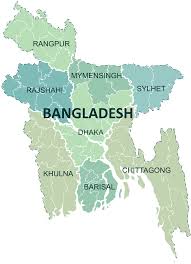Bangladesh is full of natural beauty. There are many familiar tourist-attractions in this country. These include archeological monuments, historic mosques, and minarets, the longest natural beaches in the world, mountains, forests, etc. The natural beauty of this country fascinates the tourists. Each area of Bangladesh is specialized in different characteristics.
Bangladesh is located in the northeastern part of South Asia. The Himalayas are a short distance from the northern border of Bangladesh and the Bay of Bengal to the south. West Bengal in India to the west, Tripura in India to the east, Mizoram State and the hilly areas of Myanmar. Surrounded by numerous rivers, Bangladesh is mainly flat land. The notable rivers of the country are Padma, Brahmaputra, Surma, Kushiyara, Meghna and Karnafuli. Bangladesh is the land of the Royal Bengal Tiger which lives in the Sundarbans. There is also a temple made of red clay. Notable tourist areas in the country include Srimangal, where there are tea gardens for miles after miles. Archaeological sites include Mainamati, Mahasthangarh and Paharpur. Rangamat, Kaptai and Cox's Bazar are famous for their scenic beauty. The Sundarbans has wildlife and is located in the world-famous mangrove forest.
Constitutional name of Bangladesh at a glance: People's Republic of Bangladesh
Weekly holidays: Friday and Saturday. Some offices are open on Saturdays.
International dialing code: +880
International Time Zone: BST (GMT + 6 hrs)
People
Population: 16.17 crore (Source: Bangladesh Bureau of Statistics)
Male: 8.10 crore
Women: 8.07 crore
Literacy rate: 63.6%
Language:
Bengali (National Language) - 95% of the population
Other Languages - 5%
The use of English is common.
Religion
Muslim - 86.6%,
Hindu - 12.1%
Buddhist - 0.6%
Christian - 0.4% and
Other - 0.3%.
Age-wise distribution:
0-14 years: 30.8%
15-49 years: 53.7%
50-59 years: 8.2%
Above 60 years: 8.1%
(Source: Bangladesh Bureau of Statistics)





0 Comments